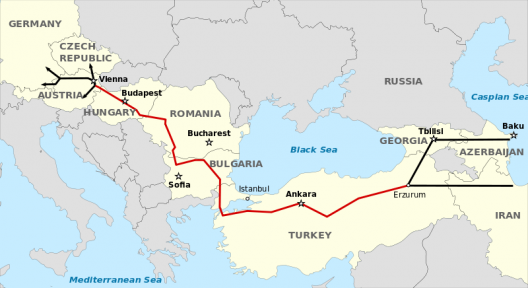 Having read, with great interest might I add, the article by David Koranyi, Ian Brzezinski and Matthew Bryza, published here on New Atlanticist and entitled After Nabucco – Croatia to the Rescue of Central Europe’s Energy Security, I totally agree with the authors that, for reasons of enhancing South-Eastern Europe’s energy security, Nabucco’s gap has to be somehow filled.
Having read, with great interest might I add, the article by David Koranyi, Ian Brzezinski and Matthew Bryza, published here on New Atlanticist and entitled After Nabucco – Croatia to the Rescue of Central Europe’s Energy Security, I totally agree with the authors that, for reasons of enhancing South-Eastern Europe’s energy security, Nabucco’s gap has to be somehow filled.
I think that it would be very useful to further elaborate on one of the “three major avenues,” proposed by the authors as viable options for augmenting energy security, namely the LNG option. While it is true that the proposed terminal at Krk, Croatia must be built as soon as possible – provided, of course, that the developers secure access to the required financing of well over $ 1.35 billion (1 billion Euros) – there is also another terminal just around the corner. I am referring, of course, to the state-of-the art Revithoussa LNG terminal in Greece, the existence of which is not mentioned in the otherwise excellent article.
Geographically, the sea distance of Revithoussa from the Suez Canal, through which the bulk of Qatari gas enters the European market, is only 650 nautical miles, compared to Krk’s almost 1,300 miles. Revithoussa is also much closer than Krk to Gibraltar, where, hopefully one day, the US shale gas will come from. In contrast with Krk, Revithoussa is not just a project “on paper,” but an operational one, with excellent records of reliability, safety and affordability (in 2013 alone, tariffs were reduced by 13 percent by DESFA, the Greek National Natural Gas System Operator). Since its inauguration (February 2000), Revithoussa has serviced more than 400 vessels carrying LNG.
Also, Revithoussa already has an excess regasification capacity of about four bcm per year, or roughly the same as the excess capacity of the proposed Interconnector Greece-Bulgaria (IGB), if we exclude the 1 bcm/year that Bulgaria is expected to receive from TAP. This simply means that it can be used to feed IGB with additional (non-Azeri) gas. This gas can travel as far as the Ukraine, thus making Revithoussa a true energy security provider. A 159-million Euros ($ 200 million) upgrade programme for Revithoussa is well underway since last June. The completion of a third storage tank will increase its total capacity by 73 percent in early 2016, enabling it to receive even the colossal “Mozah” class of LNG vessels. Sustained Maximum Sendout Rate will also increase by 40 percent.
To sum up the Greek LNG terminal is already here, it is operational, it is in the process of being upgraded, and it is ready to feed IGB (itself a very small and affordable pipeline costing only 220 million Euros and scheduled to be completed in 2016). As the Greek Ambassador to the US pointed out, a proposal aiming at connecting Revithoussa with the Ukraine through Bulgaria and Romania, called the “Central Gas Corridor,” is currently under consideration by policy-makers in Europe. Taking full advantage of the “Revithoussa option” will make Greece a vital crossroad for the reception, trading, storage and transport of natural gas to the entire South East and Central European region, accomplishing the goal set out in the article mentioned at the beginning of this comment, with a minimum of capital expenditure, as compared to any other project (in Croatia or elsewhere).
Vassilios Sitaras, Ph.D, is an energy and security analyst for the Ministry of Foreign Affairs, Athens, Greece.

